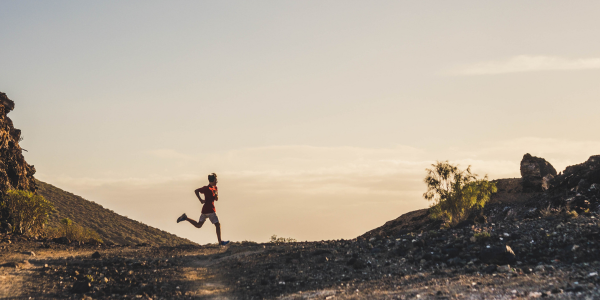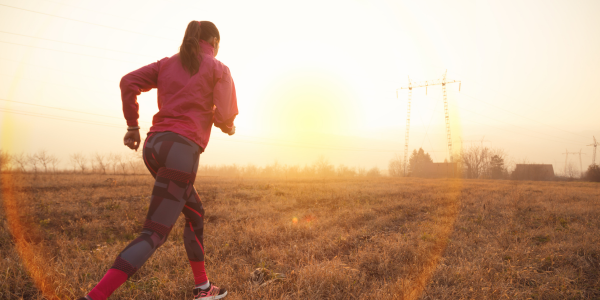Trail running has surged in popularity, captivating outdoor enthusiasts and fitness lovers alike. The thrill of navigating winding paths, steep inclines, and breathtaking landscapes makes every run an adventure. However, the beauty of nature comes with its challenges. Uneven terrain and unpredictable surfaces can lead to a variety of trail running injuries that may catch even seasoned runners off guard.
Recognizing these injuries early is crucial for preserving your passion for the trails. From ankle sprains and knee pain to shin splints and plantar fasciitis, ignoring the signs can lead to long-term damage. Just a minor ache in your lower leg could escalate into something more severe if left unchecked. With the right knowledge, you can learn to listen to your body, understand the risks, and take proactive steps to protect yourself. So, whether you’re a weekend warrior or a dedicated trail runner, it’s time to explore the hidden signs of injury and keep your adventures alive. Let’s dive deeper into the world of trail running injuries and discover how to stay on track while enjoying every step of the journey.

Common Trail Running Injuries
Trail running, while exhilarating and visually rewarding, comes with its own set of risks that can lead to injuries if not properly managed. Among the most common trail running injuries are ankle sprains, knee pain, and IT band syndrome. Ankle sprains are particularly prevalent due to uneven terrain, which can cause runners to twist or roll their ankles unexpectedly. Knee pain often manifests as patellofemoral pain syndrome, a condition where the kneecap doesn’t track properly in its groove. This is especially common among those who frequently run downhill or on rugged trails. A systematic review of running-related injuries highlighted that trail runners are at a greater risk for overuse injuries compared to road runners, primarily due to the challenging nature of their chosen paths.
Statistics reveal that approximately 30-40% of trail runners experience some form of injury each year. This high prevalence can be attributed to several risk factors, including the varied terrain that often features rocks, roots, and steep ascents and descents. These elements not only increase the likelihood of acute injuries but can also exacerbate chronic conditions. The constant shifting of weight and balance required when navigating these surfaces places additional strain on the lower limb muscles and joints, leading to potential overuse injuries like Achilles tendinopathy or iliotibial band syndrome.
Understanding how terrain and running style contribute to injury risk is crucial for any trail runner looking to stay injury-free. Additionally, the use of supportive gear like an ankle brace can provide extra stability and help mitigate the risk of sprains when traversing tricky landscapes. By paying attention to these common injuries and adjusting training regimens accordingly, trail runners can enjoy their outdoor pursuits while minimizing the risk of injury.

Subtle Signs You Might Be Ignoring
As trail runners navigate the beautiful, yet challenging landscapes filled with tree roots and technical terrain, it’s easy to overlook the subtle signs that our bodies might be sending. Persistent fatigue, minor aches, or an unusual tightness in your calves could be early warning signals of a potential injury. For instance, a slight discomfort in your knee after a long run on a rocky trail may seem trivial, but if left unaddressed, it could develop into runner’s knee, a common ailment among trail enthusiasts. Recognizing these signs early can help you avoid a more serious issue down the line.
Listening to your body is crucial in distinguishing between normal soreness from training and abnormal sensations that may indicate an impending injury. Many runners mistakenly attribute persistent aches to the rigors of their training regimen. However, differentiating between typical fatigue and the onset of something more serious—like inflammation or structural damage—can make all the difference in maintaining your running routine. For example, if you notice that a specific muscle group feels consistently sore after your runs, it might be time to reassess your strength exercises or adjust your running form to mitigate the risk of injury.
Ignoring these subtle signs can lead to a higher injury rate, ultimately sidelining you from your favorite trails. Many race entrants find themselves struggling with chronic issues because they dismissed early symptoms as mere inconveniences. A simple ache could escalate into a significant injury requiring weeks or even months of recovery. By being proactive and attentive to how your body responds during and after runs, you can better manage your training load and ensure that you remain healthy and active on the trails.

Understanding Pain: When to Worry
When it comes to trail running injuries, distinguishing between normal soreness and pain that signals a more serious issue is crucial. After a long run, it’s common to experience some muscle soreness, particularly if you’ve pushed your limits on challenging terrain. This type of discomfort typically eases within a few days and is often a sign that your core muscles are strengthening. However, if you experience sharp, persistent pain—especially around your heel bone or knees—it may indicate an underlying injury that requires immediate attention. Ignoring these signals can lead to more severe conditions like muscle tears or chronic issues, making it vital to listen closely to your body.
Recognizing when to seek medical advice is equally important. If you’re experiencing swelling or inflammation in a joint after a mountain race, it could mean you’ve sustained an ankle injury or knee strain. Other symptoms warranting attention include pain that intensifies with movement, significant discomfort at rest, or a feeling of instability in the affected area. These are not just common issues; they are red flags that should never be overlooked. Consulting with a sports medicine professional early on can help prevent minor injuries from escalating into long-term problems, allowing you to return to the trails sooner rather than later.
Inflammation plays a critical role in assessing injuries among trail runners. While some swelling is a natural response to stress on the body, excessive inflammation can hinder recovery and indicate a more significant problem. By understanding the balance between normal post-run soreness and concerning pain, you can take proactive steps toward maintaining your health and performance on the trails.

Adjusting Your Training Regimen
For trail runners, creating a training regimen that prioritizes injury prevention is crucial. One of the best practices to adopt is modifying your training plan to gradually increase both mileage and intensity. Rather than jumping into longer runs or more challenging trails, consider implementing the 10% rule: only increase your weekly mileage by 10% at most. This approach allows your body to adapt without overwhelming it, reducing the risk of stress fractures or knee injuries that can sideline you during important trail races.
In addition to gradually increasing your running load, incorporating rest days into your training schedule is essential. Many recreational runners underestimate the value of rest, often pushing through fatigue in an effort to stay on track with their goals. However, rest days are when your muscles repair and strengthen, helping to prevent issues like plantar fascia or Achilles tendonitis. Aim for at least one full rest day per week, and consider cross-training activities—such as cycling, swimming, or yoga—to maintain fitness while giving your joints a break from the impact of running.
Listening to your body is vital for injury prevention. If you notice persistent soreness or fatigue, it might be time to adjust your training plan. Instead of maintaining a rigid schedule, be flexible and willing to scale back if needed. Cross-training can also help in this regard; incorporating lower-impact activities allows you to maintain endurance and strength without risking injury. By focusing on well-rounded fitness rather than just running, you’ll not only enhance your performance but also lower the higher risk of overuse injuries that can occur when you solely concentrate on trail running.

Preventative Measures for Trail Runners
To enjoy the thrill of trail running while minimizing the risk of injuries, it is crucial to establish a consistent routine that includes warm-up and cool-down exercises. Before hitting the trails, spend at least 10-15 minutes on dynamic stretches such as leg swings, walking lunges, and high knees to activate your muscles. This preparation helps increase blood flow to your calves, hip flexors, and Achilles tendon, reducing the likelihood of strains or severe injuries. Post-run, incorporate static stretching to maintain flexibility and promote recovery; focus on areas like the iliotibial band and calf muscles, which are often under strain during trail runs.
Choosing the right footwear and gear for varying trail surfaces is another important aspect of injury prevention. Trails can range from rocky paths to beginner-friendly trails, each posing different challenges to your feet and legs. Invest in quality trail running shoes that provide adequate support and traction tailored to the specific conditions you’ll encounter. For example, if you’re tackling rugged terrain, look for shoes with reinforced soles to help reduce metatarsal pain and provide stability. Additionally, consider using gaiters or protective socks to shield your feet from debris and moisture, further safeguarding against injury.
Strength training and flexibility exercises also play a vital role in preventing trail running injuries. Incorporating resistance training into your weekly regimen can enhance muscle strength and endurance, particularly in key areas like your core and legs. Exercises like squats, lunges, and step-ups not only build resilience in your muscles but also improve balance and coordination on uneven surfaces. Flexibility routines, such as yoga or Pilates, can complement your strength work by promoting joint mobility and reducing tension in tight areas like the hips and hamstrings.

Recovery Strategies for Injured Runners
When you find yourself sidelined by an injury while enjoying the trails, the best thing you can do is to act quickly and thoughtfully. The immediate steps you take can significantly affect your recovery trajectory. If you experience pain or discomfort during your run, it’s crucial to stop and assess the situation. A common approach is to follow the R.I.C.E. method—Rest, Ice, Compression, and Elevation. For instance, if you’ve rolled an ankle on a technical trail, applying ice and elevating the affected foot can help reduce swelling and start the healing process. Additionally, using ankle support can provide stabilization as you begin to recover.
Once the acute phase has passed, exploring various recovery methods becomes vital. Physical therapy is often an effective route for addressing musculoskeletal injuries, allowing you to work with professionals who can tailor exercises to your specific needs. Strength training is also essential; focusing on strengthening the muscles around injured areas, like the shin bones or ankles, can prevent future injuries and enhance overall stability.
Patience is key in the recovery process. Many runners are eager to return to their favorite paths as soon as they feel better, but rushing back can lead to a setback or re-injury. Instead, consider gradually reintroducing running into your routine. Start with short distances on flatter terrain to gauge how your body responds before tackling those challenging trails again. Listening to your body during this time is critical; what may feel like normal soreness could escalate if ignored. By taking a closer look at your recovery journey and being mindful of your limits, you can ensure a safer return to trail running that promotes long-term health and enjoyment of the sport.

Prioritize Your Health on the Trails
In conclusion, recognizing and addressing trail running injuries is crucial for every runner. Ignoring early signs can lead to more serious issues down the line. It’s essential to listen to your body and take action when something feels off. By prioritizing health and safety, you can continue to enjoy the beauty of the trails without the burden of preventable injuries.
We encourage you to share your own experiences and tips within the running community. Your insights could help others avoid common pitfalls and stay injury-free. Let’s support each other in our trail running journeys and create a healthier, happier outdoor experience for all!







